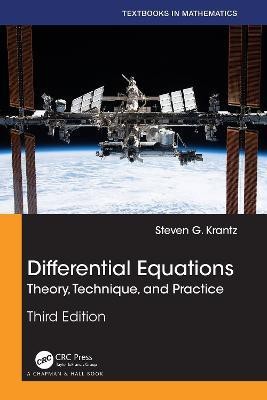Differential Equations(English, Hardcover, Krantz Steven G.)
Quick Overview
Product Price Comparison
Differential equations is one of the oldest subjects in modern mathematics. It was not long after Newton and Leibniz invented the calculus that Bernoulli and Euler and others began to consider the heat equation and the wave equation of mathematical physics. Newton himself solved differential equations both in the study of planetary motion and also in his consideration of optics. Today differential equations is the centerpiece of much of engineering, of physics, of significant parts of the life sciences, and in many areas of mathematical modeling. This text describes classical ideas and provides an entree to the newer ones. The author pays careful attention to advanced topics like the Laplace transform, Sturm-Liouville theory, and boundary value problems (on the traditional side) but also pays due homage to nonlinear theory, to modeling, and to computing (on the modern side). This book began as a modernization of George Simmons' classic, Differential Equations with Applications and Historical Notes. Prof. Simmons invited the author to update his book. Now in the third edition, this text has become the author's own and a unique blend of the traditional and the modern. The text describes classical ideas and provides an entree to newer ones. Modeling brings the subject to life and makes the ideas real. Differential equations can model real life questions, and computer calculations and graphics can then provide real life answers. The symbiosis of the synthetic and the calculational provides a rich experience for students, and prepares them for more concrete, applied work in future courses. Additional Features Anatomy of an Application sections. Historical notes continue to be a unique feature of this text. Math Nuggets are brief perspectives on mathematical lives or other features of the discipline that will enhance the reading experience. Problems for Review and Discovery give students some open-ended material for exploration and further learning. They are an important means of extending the reach of the text, and for anticipating future work. This new edition is re-organized to make it more useful and more accessible. The most frequently taught topics are now up front. And the major applications are isolated in their own chapters. This makes this edition the most useable and flexible of any previous editions.


